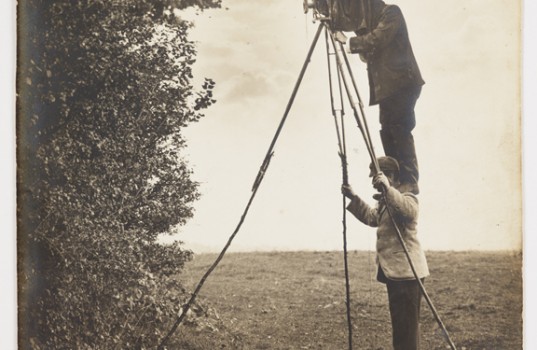Disruptive, Maybe Not – But Still Very Cool
“Disruptive” has entered every technologist’s vocabulary and, as invariably happens with a popular buzzword, the term is now as overused as the “f” word in a Tarantino drama. To be disruptive, a technology needs to upset a business model, not a business. For one company to improve, extend, enhance or package a product in such a way as to undermine a competitor’s offering is not disruption, it’s business. Yet the marketing for every new technology offering these days is almost guaranteed to come with claims of disruption.
So too, at this week’s meetup at the International Center for Photography (ICP), billed as a discussion of disruptive technology, where we could “Meet the entrepreneurs and technologists that are redefining the scope of innovation in the photography world …” Again, innovation isn’t automatically disruption. All the same, what we saw made me glad to live in New York where there are such august institutions as ICP and where are drawn the kind of innovative entrepreneurs that populated the panel.
On the hardware side we were shown, by Jean-Marc Alexia of DxO, the DxO One, a camera about the size of two Bic lighters with the imaging capabilities of a very good consumer DSLRs. Yet as the presenter himself explained the advances that give the camera it capabilities remarkable for the form factor – 20 megapixels in a one-inch sensor, “air-less” lens geometry – are not magic and since the fundamental physics is immutable, one will always be able to build a full size camera that is better than a tiny one. CNET pronounces it “a good camera and unquestionably better than that of any iPhone, but the DxO One isn’t no-brainer-better than other options for the money”. No question this is an impressive device, cleverly designed to work standalone or with an iPhone and make the best use of its size, but it’s scarcely disruptive.
A better claim to disruption may belong to the AI indexing capabilities of Clarifai. This company uses neural network programming to identify image contents and tag it with the keywords it recognizes. Matthew Zeiler, Clarifai‘s CEO, demonstrated its ability to pulled a variety of accurately descriptive keywords from a picture submitted through their web site. He claimed that with training the system is able to not only accurately identify that a picture contains a dog but determine the breed. Their site will display the keywords applicable to a video submitted for scanning (which takes seconds), graphed over time so, for instance, you can go directly to the point where there is a confluence of relevant keywords. Want to see little Johnny making a wish? Go to the highest incidence of the keywords “cake”, “candles” and “child”. Applications abound, to be sure: search capabilities, obviously; and when so much of the web is now displaying videos, you can display ads to viewers that relate to the content their viewing. If you’re still questioning how this is disruptive rather than very cool improvements over a Google image search (I was), consider the medical applications. The technology has been trained to analyze images taken of patients’ ear, nose and throat and identify the ones with a medical condition. Such diagnostic tools could greatly extend the reach of a single doctor, especially in poorly served countries, and reduce the likelihood of something being overlooked.
But perhaps the best claim to disruption, albeit from the presenter with the least compelling demo or mature product, came from Denis Nazarov of Mine. This startup is working to attach metadata including ownership details to all the images of the web. They extract a “perceptual fingerprint” from an image and link to that details of the subject, author, date, location and so on. Not lost is the richness that could be includes by leveraging the capabilities of Clarifai’s “augmented intelligence” image recognition (the two companies share some VC support). But the disruptive nature comes from the ability that what they call the Canonical Content Registry would give an image creator to identify and trace every use of their image throughout its history, connecting it even to its use in mashups and other derivative works.
Nazarov observed (I’m paraphrasing a little) that when the network is ignorant about its content, ignorance becomes a network effect. This ignorance permits use of content without restriction or accountability. Workarounds like digital rights management (DRM) depend on an institutional licensing infrastructure, and are both notoriously ineffective and widely scorned for their constraints on legitimate use (by the Electronic Frontier Foundation, for example). Using the characteristics of the blockchain protocol, the records associated with a registered image are universally accessible and completely irrefutable. No longer need a photographer fear losing control of their art by uploading it to the web. Copyright disputes could be settled with analysis of the record in the blockchain, an invisible and indelible watermark. Creators, consumers, and vendors may all find themselves interacting in different ways if this model takes hold.
It’s always interesting to see what people think is going to shake things up; but disruption, in my view, is a high bar. Claims of possessing disruptive technology are just marketing until they have been judged by history.
« CIO, Remember We’re In Business I Don’t Know Much About Strategy… »











